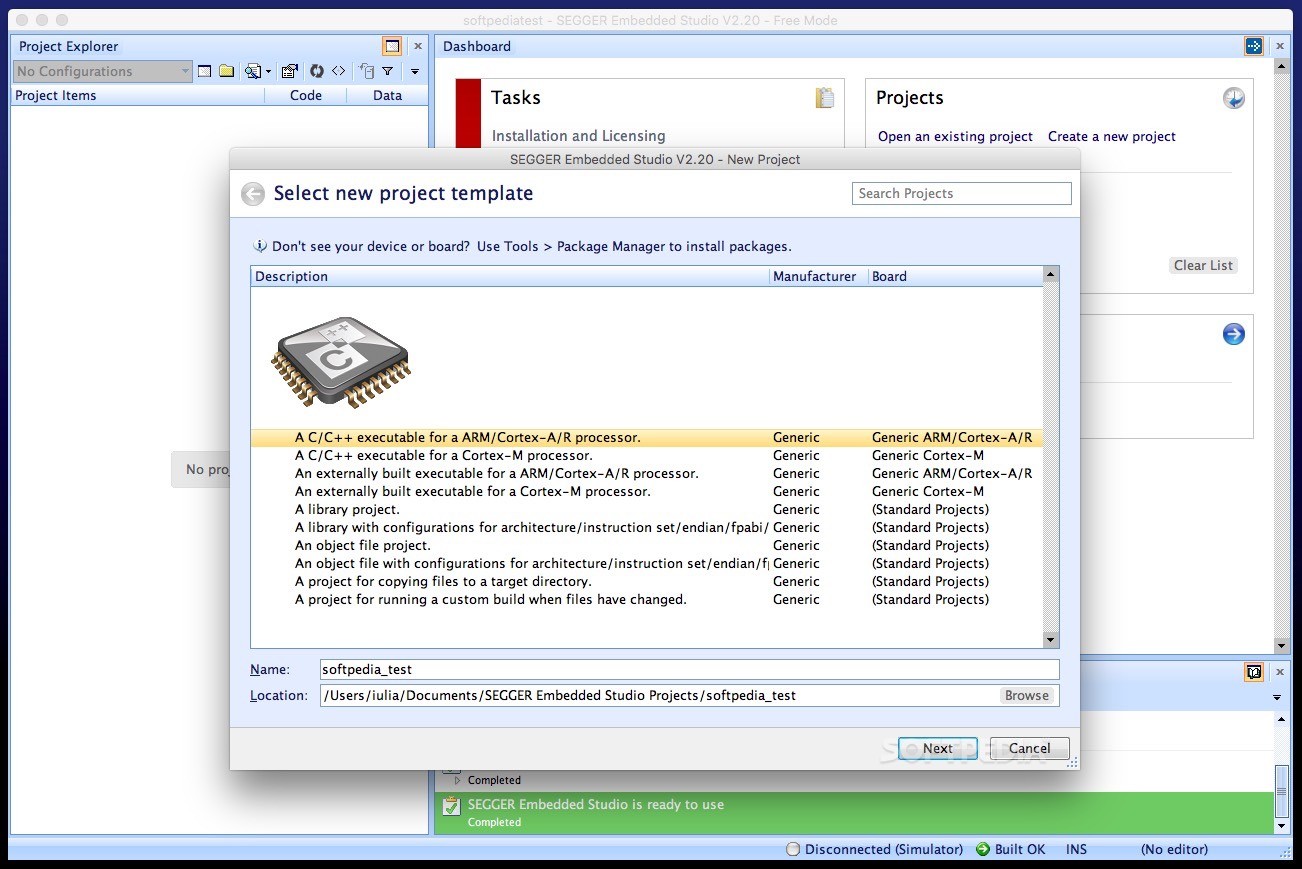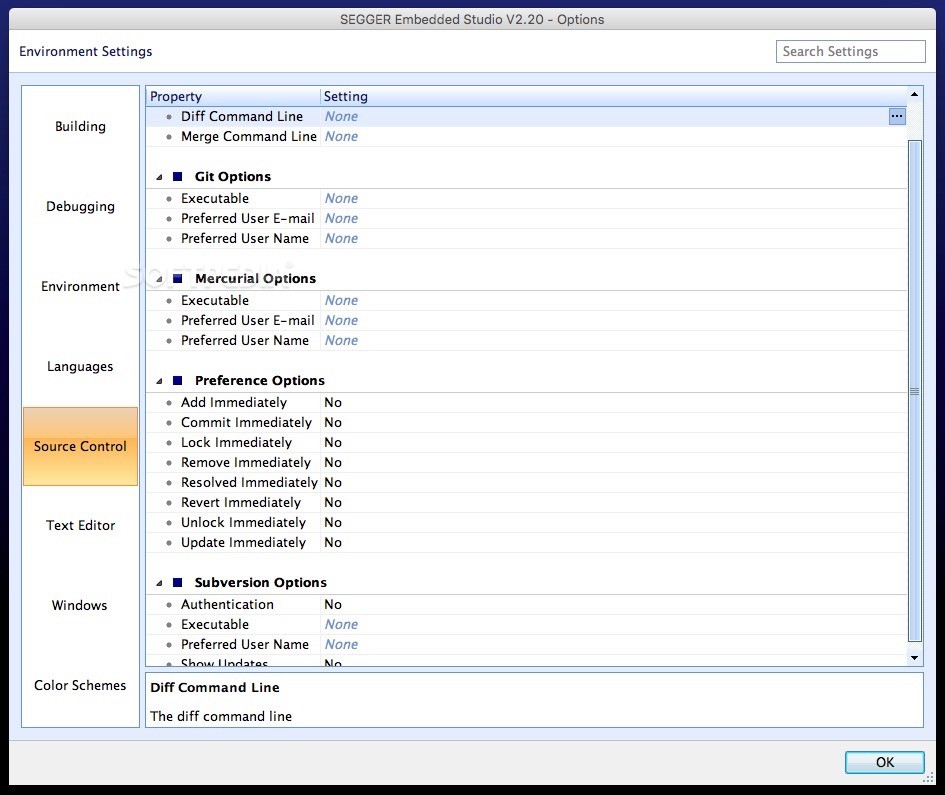

#SEGGER EMBEDDED STUDIO CHANGING FROM EXECUTABLE TO LIBRARY CODE#
The startup code will copy the contents of the. In the section-placement file to which the section will be copied.įor example, initialized data is loaded into the. To do this, the runin attribute should contain the name of a section

This is required for initialized data sections and to copy code from slow memory regions to faster ones. Some sections that are loaded then need to be copied to sections that aren't yet loaded. Some sections don't require any loading, such as stack sectionsĪnd zeroed-data sections such sections should have their load project option set to No. Sections containing code and constant data should have their load project option set If you are modifying a section-placement file that is supplied in the SEGGER Embedded Studio for ARMĭistribution, you will need to import it into your project using the Project Explorer. So that it will be located after the vectors sections as follows: You can now place the section into the section placement file using the editor Sections of an entire compilation unit by using the Section Options options. foo.Īlternatively, you can specify the names for the code, constant, data, and zeroed-data This will allocate foobar in the section called. You can create a new program section using either the assembler or the compiler.įor the C/C++ compiler, this can be achieved using _attribute_ on declarations.įor example: void foobar ( void ) _attribute_ (( section ( ". Specified in the project's linker options. Included as a part of the project or, alternatively, they can be The memory-map file and section-placement file to use for linkage can be Not be placed in a second segment when the first is full. Sections can only be placed in one segment, they will Memory segment if it exists in the memory map, otherwise it will be placed in stack section will be placed in the SRAM2 Multiple memory segments can be specified by separating them with a semicolon. The SRAM segment will be placed prior to the sections in the FLASH Memory segments are processed is bottom up so in this example the sections in

vectors is placed at lower addresses than. Note that the order of section placement within a segment is top down in thisĮxample. This is done by using a memory-segment name in the section-placementįile that matches the corresponding memory-segment name in the memory-map file.įor example, a section-placement file that places a section called. The memory-map file and will list the sections to be placed in those Segments called FLASH and SRAM could look somethingĪ corresponding section-placement file will refer to the memory segments of To be shared across projects and also enables a project to be built for aįor example, a memory-map file representing a device with two memory Map from the section-placement scheme enables a single hardware description Program sections in the target's memory segments. The section-placement file specifies where to place Specifies the start address and size of target memory They can be edited with the SEGGER Embedded Studio for ARM text editor. These XML-formatted files areĭescribed in Memory Map file format and Section Placement file format. The SEGGER Embedded Studio for ARM project system uses memory-map files and To describe how the program sections of your program are positioned in memory, There is often more than one code section and they must be There are program sections for code, initialized data, and zeroed data. Executable programs consist of a number of sections.


 0 kommentar(er)
0 kommentar(er)
